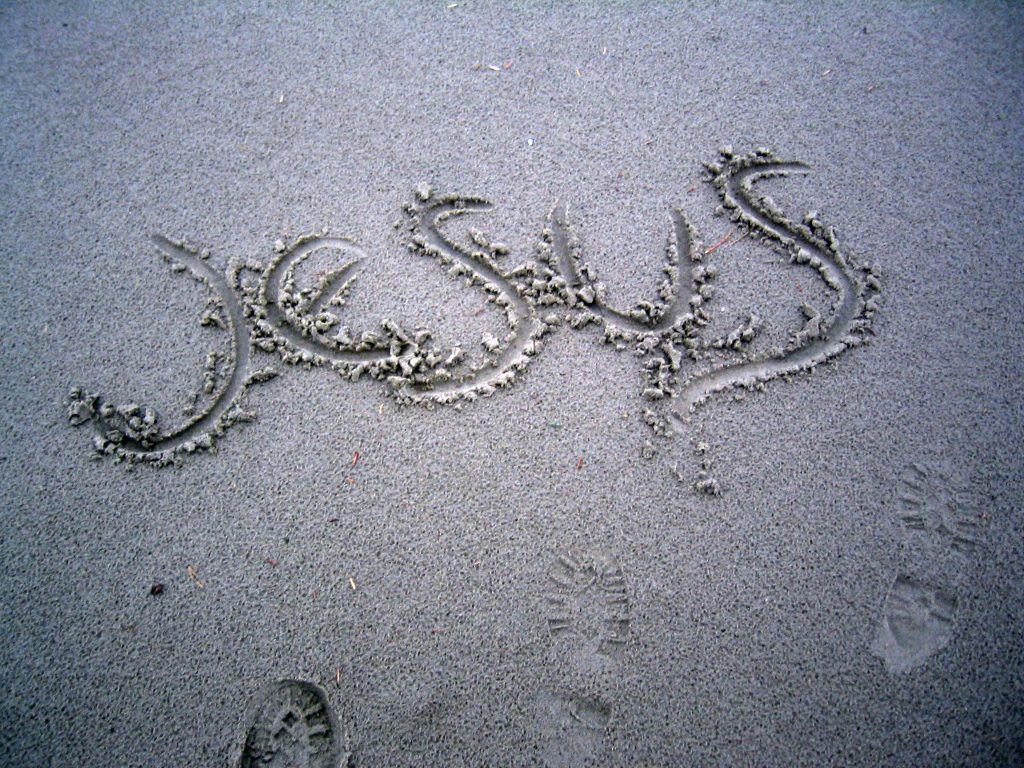
Flickr User Amancay Blank
Sixth Sunday of Lent
When was the last time you drew something in the sand? Just thinking about this brings a smile to my face. As a kid, I loved drawing flowers, beaming suns, a heart with an arrow, my name. I loved the feeling of the rough sand or wet dirt on my fingertips. I reveled in the idea of someone walking by and admiring my artwork after I had gone away from it. Or watching it be washed away by the lapping waves. Whether at the beach, the ball field, or hanging out at the park with friends, there’s something so simple about squatting down and writing a message in the sand.
Simplicity is the key in today’s Gospel passage.
The Pharisees approach Jesus with a dilemma. A woman is caught in adultery, and the law of Moses commands that the consequence of anyone caught in adultery is death. For this woman, this is as serious as it gets. It’s a matter of life and death. Yet, for the Pharisees, this is less about life and death, and more about the person of Jesus. They are looking to trap him. Either Jesus will agree to the death of this woman, proving that the Pharisees stand in righteousness, or he will deny the Law of Moses and discredit himself in blasphemy.
Jesus responds, not to the complexity of this dilemma, but with simplicity. He kneels down and writes in the sand, and in response, the Pharisees walk away from both the debate and from the stones.
We are never told what he writes. The Gospel writer leaves that to the reader’s imagination. Which begs the question: If I were a Pharisee, what would it take for me to walk away? What would he have had to write in order to change my heart?
Many have speculated over this passage. Some say he simply drew a line in the sand, positioning himself on one side and the Pharisees on the other. Others say he wrote out the Ten Commandments. Still, others imagine he was simply doodling, an act of dismissal to the foolish accusers.
But here’s what I think. I think if I were standing there, all he would have had to do was write a name. One word that spoke to my sins. “Marcus.” The name of my brother, whom I mistreated as a child. “Cindy.” The girl who was bullied mercilessly on the bus while I looked the other way. “Linda.” The woman at my church that I secretly can’t stand. “Paul.” The man I had cheated on in my heart.
It wouldn’t take much for Jesus to shine a light on my own guilt and shame. In the simple act of writing in the sand, he reminds me that this adulteress woman and I are one. We are both guilty of falling short of the person God designed us to be. We are both in need of mercy. We are both desperate for a savior.
As the Pharisees exit the scene, leaving their stones to the wayside, Jesus assures the woman: “Nor do I condemn you. Go and sin no more.”
How the woman responds, and how she continues to live after her encounter with Jesus, is also left to the imagination of the reader. Her choice is ultimately my choice. She and I are the same. Deserving of punishment, yet made whole, dignified, and given purpose through the love of Jesus Christ. He defies the traps of this world, and his mercy gives us hope.
When the world wants to throw stones at us, Jesus wants to redefine us. How will you respond to his mercy today?




